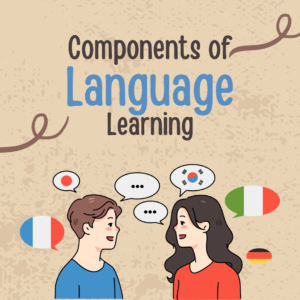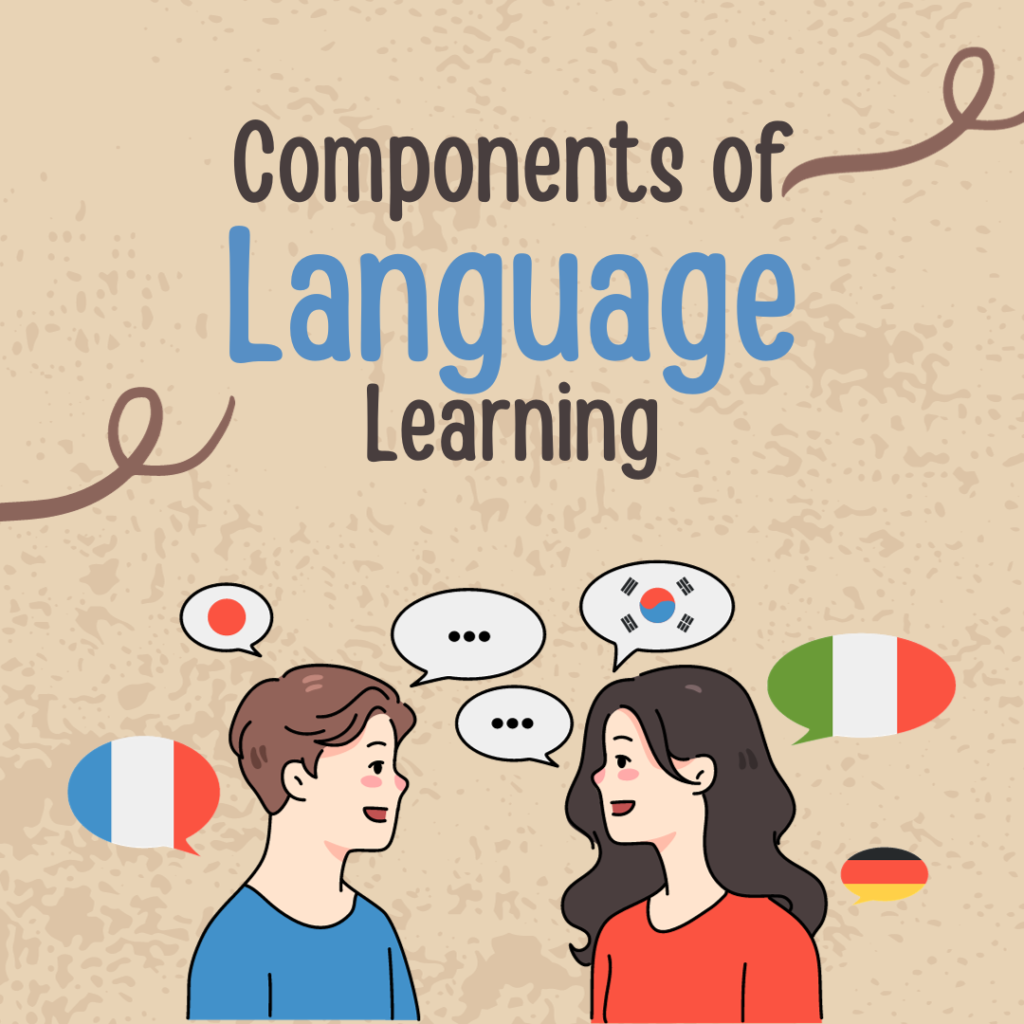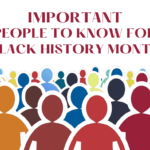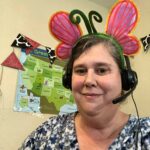Today I wanted to talk to you about the components of language learning. So many people come up to me and say I want to learn Spanish or I want to learn English and that’s a wonderful goal. But there’s a lot involved with learning a language. So I wanted to talk to you today about the different parts of language. In general, there are six parts of language: vocabulary, grammar, reading, writing, conversation, and culture.

Vocabulary in Language Learning
First of all, is vocabulary, Vocabulary is the words. When you start learning a language, the first thing that you’re going to learn are some vocabulary words. In all honesty, there’s not really an easy way to do this other than memorization. There are lots of tools that you can use. There are some great apps that help with that. Duolingo is a wonderful app to help you learn some vocabulary. Flashcards are really good. I have a lot of different kinds of flashcards available on my Teachers Pay Teachers store. You can make your own flashcards. I made a notebook for myself, but the point is you’re going to have to learn a lot of words. In the beginning, they’re not really going to make sense you’re just going to have to memorize them. Also, different jobs or different hobbies have different jargon. Jargon is the words specific to that hobby or that job. For example, when I was breeding horses there were a lot of words that I used specifically when working with the horses that I might not use in other places. I’ll be honest, I’m not very familiar with a lot of the jargon used in sports. Another tool that you can use to learn these words is Google. One of my best friends is Google Translate, If there’s a word that I don’t know especially in a sport that I’m not familiar with, I can usually look it up and find a good translation.
Grammar in Language Learning
The next part of language is grammar. Grammar is how you put the sentences together. It’s how you use those words to make a sentence and it’s also the patterns of language. For example, this is when you get into the conjugation of verbs and using the correct pronouns and the direct and indirect objects. With all of these grammar things, you learn the patterns. When you are going to learn a new language, the good thing is that you already speak a language. You can use that language to help you identify the patterns and sometimes it’s a good thing to notice what is a different pattern than your native language. For example in English the works for all definite articles in Spanish you have el, la, los, or las. You can check out my article on this subject: Definite and Indefinite Articles in Spanish. That’s quite different. When you notice that something’s different in a language that means that maybe you need to spend a little bit more time focusing on it.
Writing and Reading in Language Learning
I’m going to put reading and writing together in this case because reading and writing in another language is very similar to reading and writing in your native language. You can have a perfectly good conversation and not know how to read or write. Reading and writing have to do with the phonemes, knowing what sounds letters make, and putting those together to make words. Maybe that is not your goal. Maybe you don’t need to be able to read a language. Maybe you just need to be able to have a conversation. You choose your own goals. However, I do suggest that you learn some reading and writing. I will say, especially if you’re going to learn Spanish, reading in Spanish is very easy because the vowels always have the same sound. It’s much easier to learn to read in Spanish than it is in English. So if you’re already reading English, then Spanish will be very easy for you. I personally do better when I can see a word written. I can remember it better. Reading and writing can also be good tools for you to memorize these new words that you’re learning.
Conversation in Language Learning
Another part of the language is conversation. Conversation is both listening and speaking. Usually, when you learn a language you can understand it a lot better than you can speak to start out. If you notice, that’s how a baby learns. At first, the baby is listening and they might respond with a very simple answer. That’s kind of how it works when you’re learning a new language. You may understand the question but you may not be able to elaborate on your answer. You might be able to only get out si or no. Just think of it as the natural progression. It’s very normal for you to understand but not be able to speak. I know when I was learning Italian, I can understand quite a bit of Italian but I still cannot quite get my thoughts out the way I’d like to. I still sound like a child when I’m speaking Italian. My vocabulary is not very big. You’ll also see that same progression in reading and writing. You can usually read before you can learn to write, The input is usually quicker than the output. Don’t get frustrated if you feel like you can’t speak or you can’t write your new language very well yet, It will come. Keep practicing!
Culture in Language Learning
The last part of language learning that I want to talk about is the culture. You cannot learn a language and completely ignore where the language is coming from. Granted, here in the United States, there are people of many cultures that live here. They kind of share the culture but realize that Spanish actually comes from other places, other countries that maybe have different traditions or beliefs or ways of life than we do. Another thing that you need to take note of about culture is that one thing may be called different things in different places. Different words may all mean the same thing, It pretty much depends on where you’re living or what audience you’re speaking with to know which one to use.
Conclusion
The next time that you find yourself saying I want to learn Spanish which is a wonderful goal by the way) think a little bit more about what it is specifically that you want to learn. Do you need to learn some vocabulary? Are you just getting started? Are you ready to start putting it together and learn some grammar? Do you really want to be able to talk to someone and learn some conversation? Do you love to read and want to be able to do that in another language? Think a little bit more specifically about what your goal is and just pay attention and focus by breaking down the different parts of the language. It will help you be able to focus on one specific area and as you gain proficiency in that area you can expand to the others.
Resources at My Bilingual Life
Here at My Bilingual Life, we have resources available for all of these areas of language learning. We have vocabulary resources to learn and practice new words. We have many grammar exercises and reading comprehension passages. Some of our reading comprehension passages are biographies about historical figures…so you can practice reading and learn about the culture at the same time. (Check out this article about using biographies in your classroom.) Be sure to check out our store on Teachers Pay Teachers to find more resources for language learning.





